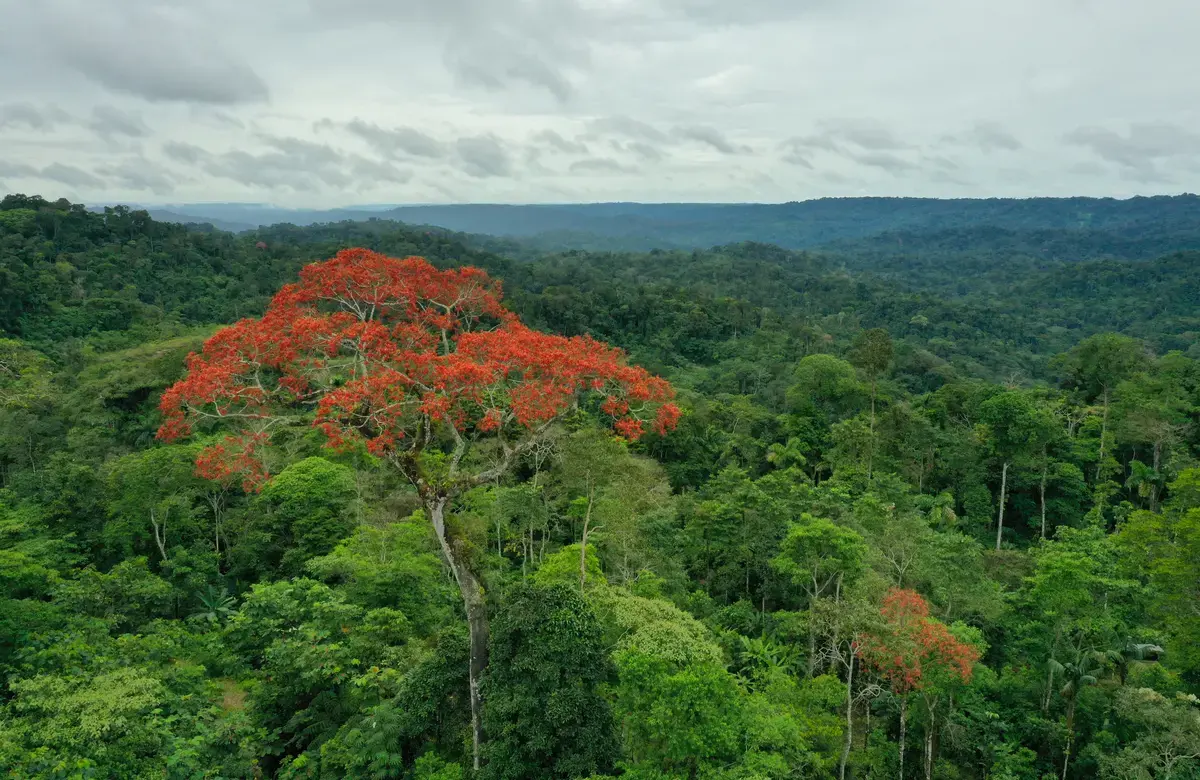Biodiversity in the Tropical Forests
Forest biological diversity refers to all life forms found within forested areas and the ecological roles they perform. It encompasses not just trees, but the multitude of plants, animals and microorganisms that inhabit forest areas - and their associated genetic diversity. Forest biological diversity can be considered at different levels, including ecosystem, landscape, species, population and genetics. Complex interactions can occur within and between these levels. This complexity allows organisms to adapt to continually changing environmental conditions and to maintain ecosystem functions.
Rainforests in tropical areas are rich in biological diversity. According to The State of the World's Forests 2020 report, the regions showing the highest biodiversity significance are those having many species with small geographical distributions, such as Southeast Asia and lowland forests of the insular area of the region.
However, deforestation and overexploitation of forest and biodiversity, including tropical rainforests, have caused serious damages to humans and the environment, such as droughts, floods, food security, pollution, health, biodiversity extinction, and human rights. Reporting and bringing attention to these issues are urgent and critical.
Useful resources:
- The State of the World's Biodiversity for Food and Agriculture
- Understanding the drivers of Southeast Asian biodiversity loss
- ASEAN Focus - Spotlight: Biodiversity Conservation in ASEAN
Call for Proposals
The Southeast Asia Rainforest Journalism Fund (RJF) and the Pulitzer Center are opening a new special call for grant applications. Journalists, editors, and independent media organizations are invited to submit a proposal on the biodiversity of tropical rainforests in Southeast Asia: Impact of exploitation and deforestation on biodiversity and conservation efforts.
The projects should consider several points:
1. Much of the forest areas, including rainforest, in Southeast Asia are deforested. How has and will this impact biodiversity and conservation? Who is responsible?
2. Rainforests, especially in lowland tropical areas, are rich in biological diversity with flora and fauna. What has been done to protect and conserve biodiversity in the region?
3. Millions of people, including Indigenous communities, live near and inside forests. How local communities that live in the forest benefit from forest biodiversity for food, medicines and tradition.
4. Why protecting forest biodiversity is important for climate mitigation and helps regulate resource sustainability such as food, clean water and air, and health.
5. Issues related to injustices, gender inequality and land rights issues.
Consider the goals and impact of your reports. How can your reports spark conversation and raise awareness (among policy makers, Indigenous Peoples and local communities who live near and depend on the forest, scientists and researchers) about deforestation, forest degradation, and biodiversity conservation?
The projects should highlight local voices and have a strong distribution plan in influential local and/or regional news media (can be print, online and/or broadcast, or a combination). The plan must include commitment letters from interested editors and publishers working in the news media outlets they propose.
Proposals for this special call must be received by April 30, 2022. Applications can be submitted in English or Bahasa Indonesia. Reporting can be done in any national language. The review committee will select a limited number of projects meeting the proposal criteria, with priority given to collaborations that can reach a broad domestic and/or international audience.
Click here to access the application form.
Criteria for Proposals. Proposed projects should:
- Involve collaboration. This could include local and/or indigenous journalists, or domestic-international media partnerships;
- Have strong and strategic distribution plan;
- Demonstrate attention to editing, reporting, and safety standards (for example, avoiding unnecessary travel and implementing preventive health measures for journalists and communities);
- Utilize innovative reporting techniques, such as data journalism and multimedia storytelling (photos, videos, infographics, etc.), to build strong stories with minimal pandemic and safety risk to sources.
Projects involving collaborations (between national and/or Indigenous journalists, or between domestic-international media partnerships) will get extra consideration, though projects by solo journalists or single media outlets are acceptable.
Eligibility: Grants are open to journalists, writers, photographers, radio producers, and filmmakers. Staff journalists, as well as freelancers of any nationality, are eligible to apply. Newsrooms or teams may also apply—the team lead should be the main applicant.
Applications should be submitted via the form at the link below. The form will require the following information:
- A project description (400 words max), including the following information: topic/focus and its timeliness; methodology (details about coordination, reporting, editing, and information management—particularly in relation to local journalists);
- Safety plan (if applicable), including risk mitigation (health, physical safety) for the journalist and communities that may be involved in the reporting project, and consideration of ethics issues;
- Deliverables and distribution plan (200 words max), including publication plan and media partnerships;
- Preliminary budget estimate, including a basic breakdown of costs;
- For the lead journalist: contact information, CV, three work samples, and three professional references;
- For the rest of the team: description of roles, professional qualifications, and CVs where possible;
- Letters of commitment from interested partner media or editors;
- Applications may also include a more detailed description of the project, but this will be considered as an optional supplement only;
- Please note that the advisory committee is particularly keen to support collaborative proposals that can reach a wider audience.
- Deadline: April 30, 2022.
Budget: Up to US $10,000 maximum award amount for these grants, but depending on project specifics, it may be higher. Budgets can include, for example:
- Compensation for local journalists;
- Cost of project coordination/management;
- Travel and lodging;
- Data analysis and visualizations.
For approved projects, half of the grant amount is generally paid just before the reporting, and the remainder is delivered upon submission of the principal material for publication or broadcast. Specific grant terms are negotiated during the application process.
Application Timeline: Within a week of your submission, you should receive a confirmation of receipt. Applications will be due on April 30, 2022, and successful applicants will be notified by mid May 2022.
Questions? Contact: Harry Surjadi [email protected]
